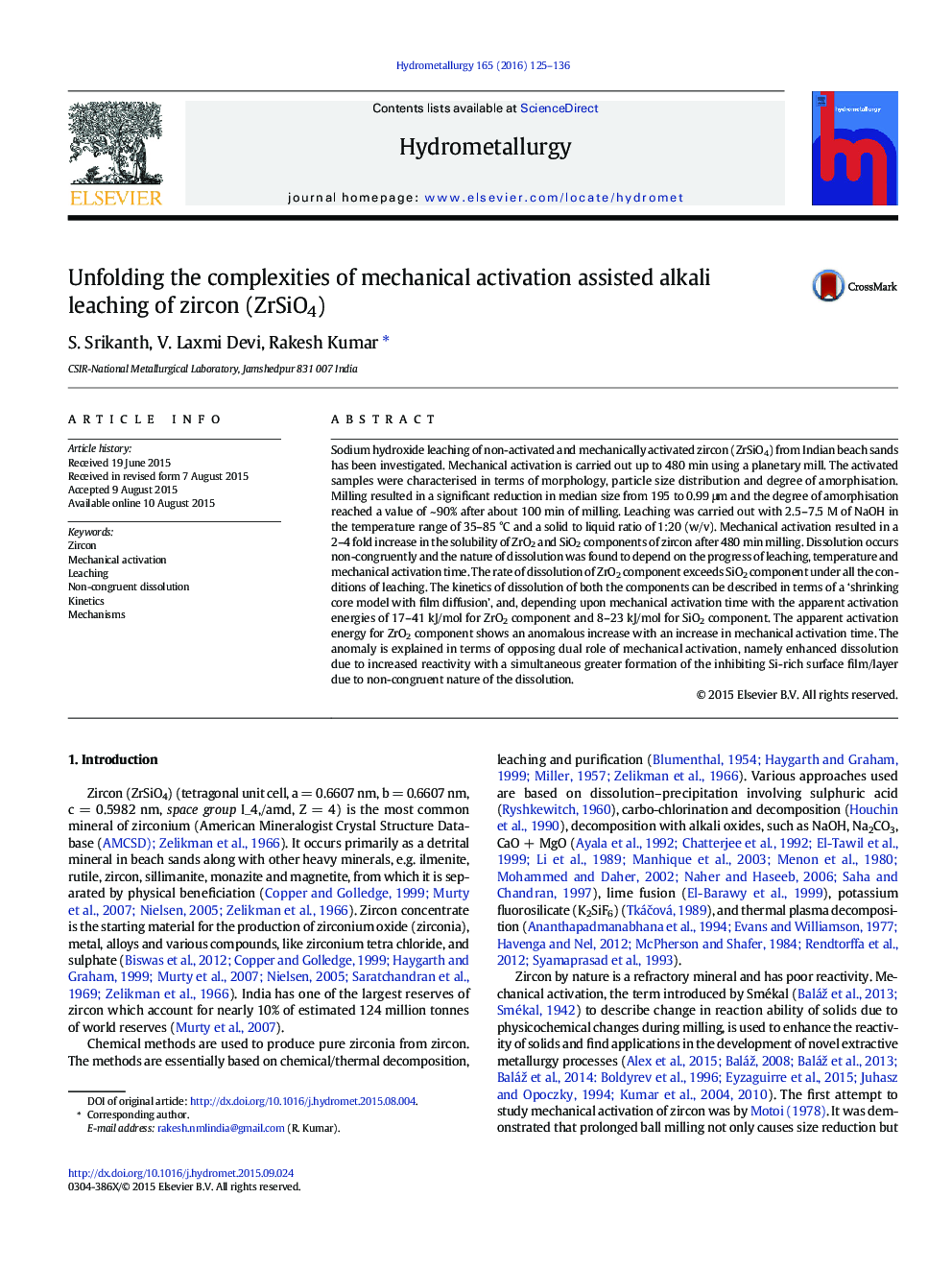| کد مقاله | کد نشریه | سال انتشار | مقاله انگلیسی | نسخه تمام متن |
|---|---|---|---|---|
| 6476826 | 1362516 | 2016 | 12 صفحه PDF | دانلود رایگان |

- Mechanical activation of zircon (ZrSiO4) using planetary milling is carried out.
- The nature of alkali dissolution of mechanically activated zircon is elucidated.
- Kinetics of alkali dissolution of zircon is modelled and explained.
- Activation energy for ZrO2 shows anomalous dependence on milling time.
- Plausible explanation for anomalous dependence of activation energy is presented.
Sodium hydroxide leaching of non-activated and mechanically activated zircon (ZrSiO4) from Indian beach sands has been investigated. Mechanical activation is carried out up to 480 min using a planetary mill. The activated samples were characterised in terms of morphology, particle size distribution and degree of amorphisation. Milling resulted in a significant reduction in median size from 195 to 0.99 μm and the degree of amorphisation reached a value of ~ 90% after about 100 min of milling. Leaching was carried out with 2.5-7.5 M of NaOH in the temperature range of 35-85 °C and a solid to liquid ratio of 1:20 (w/v). Mechanical activation resulted in a 2-4 fold increase in the solubility of ZrO2 and SiO2 components of zircon after 480 min milling. Dissolution occurs non-congruently and the nature of dissolution was found to depend on the progress of leaching, temperature and mechanical activation time. The rate of dissolution of ZrO2 component exceeds SiO2 component under all the conditions of leaching. The kinetics of dissolution of both the components can be described in terms of a 'shrinking core model with film diffusion', and, depending upon mechanical activation time with the apparent activation energies of 17-41 kJ/mol for ZrO2 component and 8-23 kJ/mol for SiO2 component. The apparent activation energy for ZrO2 component shows an anomalous increase with an increase in mechanical activation time. The anomaly is explained in terms of opposing dual role of mechanical activation, namely enhanced dissolution due to increased reactivity with a simultaneous greater formation of the inhibiting Si-rich surface film/layer due to non-congruent nature of the dissolution.
Journal: Hydrometallurgy - Volume 165, Part 1, October 2016, Pages 125-136